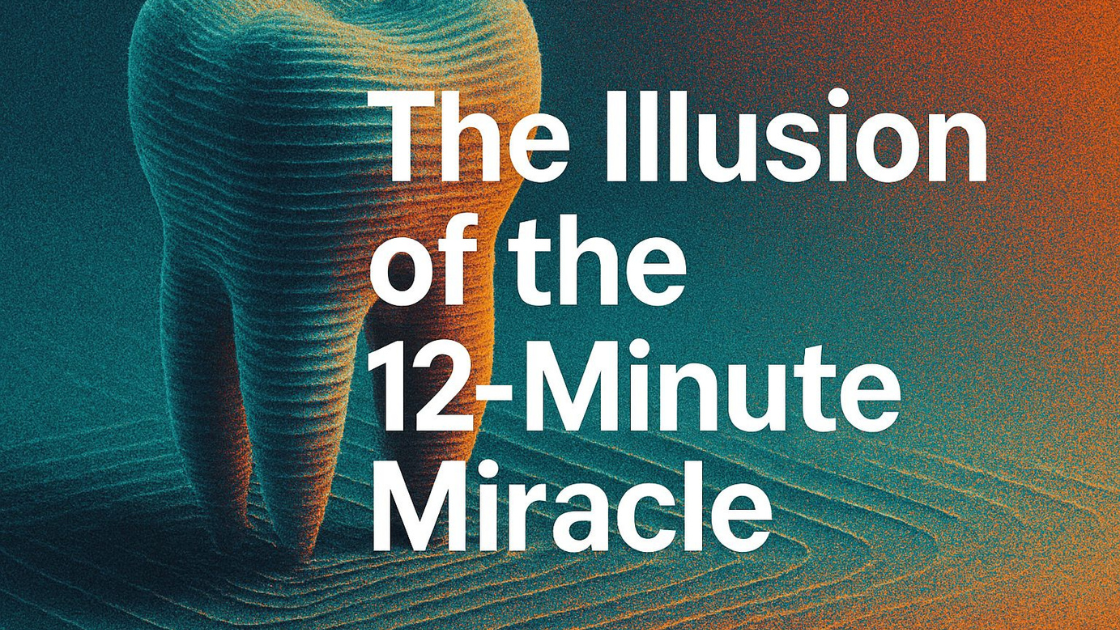
A recent blog post from a respected clinician described an impressive chairside demo at IDS 2025: scan to printed crown in just 12 minutes. For those of us working at the intersection of clinical dentistry and digital workflows, it’s easy to see why that turned heads.
However, there’s a significant gap between the impressive live demonstrations and the practical realities of everyday practice. This gap is worth examining, especially when considering real-world costs, staffing, and clinical outcomes.
Chairside workflows are often framed as frictionless: scan, auto-design, send to print, post-cure, and you’re done. The reality is more involved:
Even in ideal conditions, a single chairside crown production cycle routinely takes 25–35 minutes. And that’s assuming no interruptions, scanning errors, or printer hiccups.
Let’s put hard numbers to this.
What begins as a "self-contained solution" quickly becomes a time sink, burning the clinic’s most expensive human capital on tasks that a digital lab handles every day, at scale, with far greater efficiency.
If you run five chairside prints a week, you’ve just lost over £65,000 per year in surgeon time alone.
The promoted system includes a scanner, printer, AI-driven design software, resins, and support, advertised at just about £24,000. That number is bolded in marketing headlines. But it’s the soft costs that add up fast:
And none of that includes the cost of remakes, reprints, or quality issues caught only after a failed test.
In effect, you’ve introduced a lab inside your clinic that requires training, management, and oversight but lacks an actual lab's specialisation and quality control.
The reality is that time is lost, the team is stretched, and focus is scattered.
What looks like innovation on a demo floor turns into operational drag inside a busy practice. The promise of chairside convenience too often becomes a silent liability burning through your highest-value time in exchange for marginal control over production. By 'marginal control over production', we mean the ability to oversee the entire process, from scanning to printing, but not necessarily the ability to significantly influence or improve the quality of the final product.
We’re a digital lab. We work with hundreds of practices that run efficient, tech-forward workflows- many with in-house systems. But we’ve also been called in when the day-to-day reality doesn’t match the sales pitch.
We’ve learned that the most successful practices don’t chase speed. They protect clinical time, delegate where appropriate, and build systems around what’s sustainable, not what looks good on a stopwatch.
If your goal is quality care, predictable outcomes, and efficient resource use, outsourcing crown production still outperforms chairside printing on every meaningful metric. These metrics include cost-effectiveness, time efficiency, quality control, and the ability to focus on core clinical tasks.